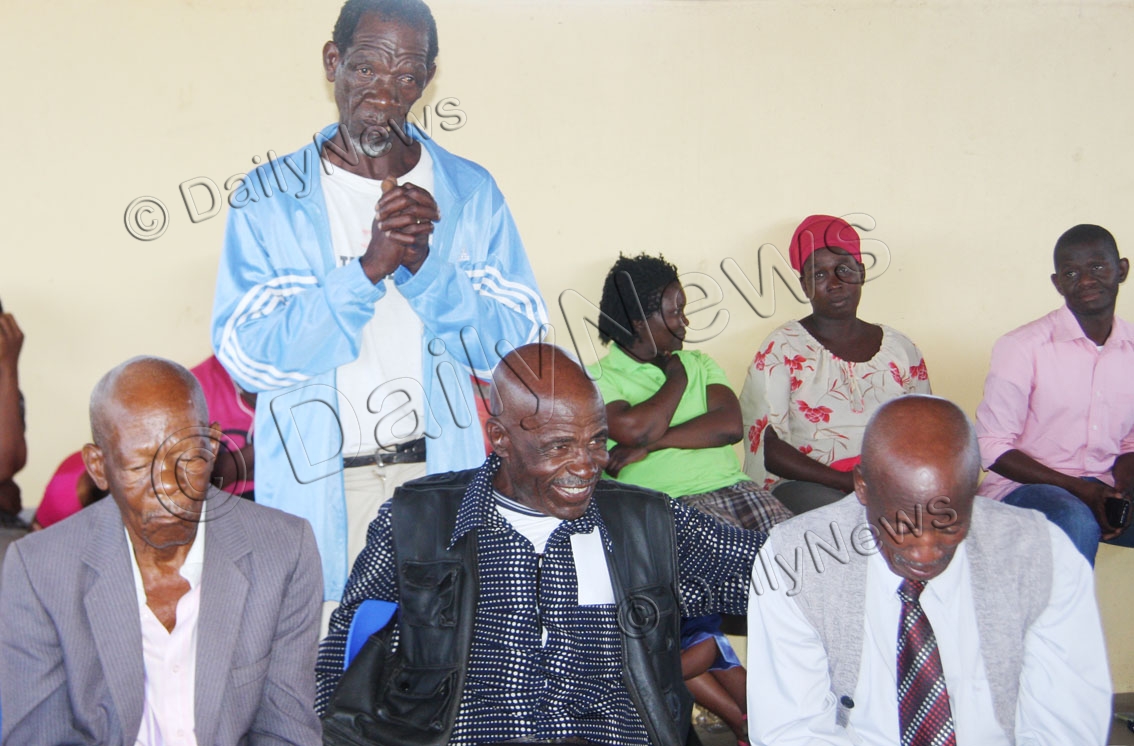Residents keen to revive Mogobane project
14 Jul 2015
On a stretch of land, a tunnel from Mogobane dam divides the village from one end to the other and its end leads to the old and dilapidated structures.
Evidently idling and misplaced, the structures represent a lost treasure that continues to pain the residents of Mogobane in the South East District.
Every day, they wake up to see the ruins of a dream that has gone wrong and are now imposing themselves to defy the beauty of the village. Much pain comes from the fact that the structures, which are more like a ghost house, used to be a source of economic income.
“The idea is to resuscitate this project, but we want to start with horticulture,” said Mr Lawrence Magosi earlier this year during a tour of the project.
Chairperson of the Gamalete Development Trust, Mr Magosi belongs to the generation which once witnessed the potential of the project.
During its heydays, the Mogobane Irrigation Scheme was a source of livelihoods to hundreds of households as well as reducing the country’s milk and vegetable deficit.
“Our timeline is that by August, we should be planting seedlings,” said an optimistic Mr Magosi. And knowing that the success of a community-based project lies within the community itself, he pleaded for the support.
“But, we need the support of the community against vandalism,” he said to fellow tribesmen.
Already, he said they have drilled six boreholes for the project, although the water harvest is still insignificant for a project of such magnitude. He noted that they are undertaking a study to assess the viability of Mogobane dam in supporting the project.
Other than that, the fencing which was estimated to cost P1.2 million is complete while the construction of the reservoir and shades are underway.
According to him, horticulture project will occupy 20 hectares out of the 120 hectares of land available. “We will use another land for fodder production, we have an advantage of a huge land,” Balete deputy chief, Kgosi Tsimane Mokgosi said.
Actually, he said, the tribe had opted to start with dairy production but their donor preferred the horticulture project.
According to him, fodder production is essential for the project revival as surplus will be sold.
“If we can have surplus fodder, then we will have to assist other dairy producers in the country,” he said.
Recently in a kgotla meeting in Mogobane, Minister of Agriculture Mr Patrick Ralotsia, said the country needs about 60 million litres of milk annually whereas it produces only three million litres.
“Mogobane has the potential to reduce this deficit drastically,” said Mr Ralotsia.
The milk shortage calls for more efforts to support dairy farming and for the farmers to consider adventuring into it, he added.
Even if the country could be self-sufficient in milk production, there are other industries which could be supported by milk production, he said.
The minister reiterated the government’s commitment towards assisting Balete to resuscitate their once massive project.
Actually, it was the government that channeled about P10 million to revive the project which will also provide employment opportunities to the community.
Apart from the government funding, Mr Magosi added that the project which is expected to reduce poverty in the district is hopeful that other donors would come forward to assist.
The multimillion pula project, which is based on community resilience, is expected to address issues of food shortage and promote sustainable economic diversification and poverty eradication.
Upon its revival, Mogobane Irrigation Scheme project is expected to have a dairy farm and horticulture farm. ENDS
Source : BOPA
Author : Bonang Masolotate
Location : RAMOTSWA
Event : Village profile
Date : 14 Jul 2015







